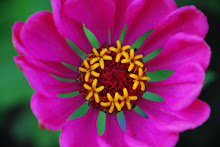Good afternoon gardening friends,
Today is the last day of 2017 and like most years it was filled with both the good and the bad. Thank you for sharing the gardening year with me by attending my classes, reading my blog, subscribing to my newsletter, and hiring me for your garden design and consultations. I am grateful for the many ways you all have supported my small business and the work I am truly passionate about. Thank you for sharing the gardening life with me!
For me January marks the beginning of "garden dreaming." During the cold, wet, and sometimes frozen winter months of January and February I am pouring over seed catalogs and itching to get outside into the garden. Funny that today, December 31st it is sunny and nearly 50 degrees. One week ago temperatures were in the 20s with snow, freezing rain, sleet, and ice. We went from a white Christmas to a Los Angeles winter in one week. I find the sudden alarmingly early spring-like weather distressing. I am confused because it does not seem like winter or the kick off of seed catalog and garden dreaming season.
Usually at this time of year I begin writing about seasonal affective disorder and what we gardeners humorously like to call seed acquisition disorder. A few years ago, a funny drawing by Joseph Tychonievich of Green Sparrow Gardens was floating around the Internet. He says, "The short dark winter days cause me to suffer from S.A.D.--Seed Acquisition Disorder.”
Portland gardening friends, I’m sure you can all relate to this! Maybe not so much today when the weather is sunny and warm. I think back especially to the winter of 2015-2016 when it rained so much enormous trees toppled over because their roots were no longer stable in the constantly saturated soil. And the winter of 2016-2017 when we had four snow/ice events by the second week of January.
After the autumn leaf raking frenzy and during the intensity of the holiday season we are happy to have a rest from our gardens. At the beginning of every year the new seed catalogs arrive in my mailbox. I spend hours excitedly pouring over each catalog, wrapped in a blanket, drinking pots of my favorite tea and devouring every detail of the new and old favorite varieties of vegetables, herbs, and flowers.
Most years I find myself in pajamas and boots, clipboard in hand patrolling my puddle-filled, mostly dormant garden I gaze at the lush fall-sown cover crops and I ponder what worked and didn't work last year. I make list after list of garden plans. Dreaming and fantasizing about peonies, dahlias, sunflowers, and lilies I mark up my seed catalogs and make online wish lists. I eat, drink, breath all the endless potential and promise my garden holds in the coming year. My unchecked gardening enthusiasm for heirlooms can also promise the emptying of my bank account if I do not practice some restraint.
Heirloom seeds offer a diversity of old-fashioned quality, and are rich in taste, color and history. Heirlooms are commonly defined as open-pollinated varieties that have resulted from natural selection rather than a controlled hybridization process and were grown prior to 1950. Some of my favorite sources for heirloom seeds for the Portland area gardener are Seed Savers Exchange, Baker Creek Heirloom, Botanical Interest and Renee’s Garden.
When purchasing seeds you will see many terms like heirloom, cultivar, GE, GMO, open pollinated, hybrid, organic and treated. All of these can be confusing and are often misinterpreted by the gardener consumer. I found a handy online resource from Renee’s Garden called Seed Buying 101: A Seed Gardener’s Glossary.
If you are concerned about GMOs, signers of the safe seed pledge do not knowingly buy or sell genetically engineered seeds. A list of companies that have signed the pledge is maintained by the Council for Responsible Genetics, a non-profit with a stated mission of educating the public about and advocating for socially responsible use of new genetic technologies.
With so many seed choices, where does a gardener begin? First, make a list of all the things you are interested in growing, their growth habits and size at maturity. Take measurements of your garden and draw out where you might place things. You are invited to join me for organic gardening classes in February and March. Or schedule an in-person or email gardening consultation appointment.
Winter is the perfect season to explore gardening books like: The Maritime Northwest Garden Guide, Growing Vegetables West of the Cascades, and The Timber Press Guide to Growing Vegetables in the Pacific Northwest. Enjoy every moment of the garden dreaming season before the hard work of spring begins!
Happy New Year!
Jolie
Sunday, December 31, 2017
Subscribe to:
Posts (Atom)
